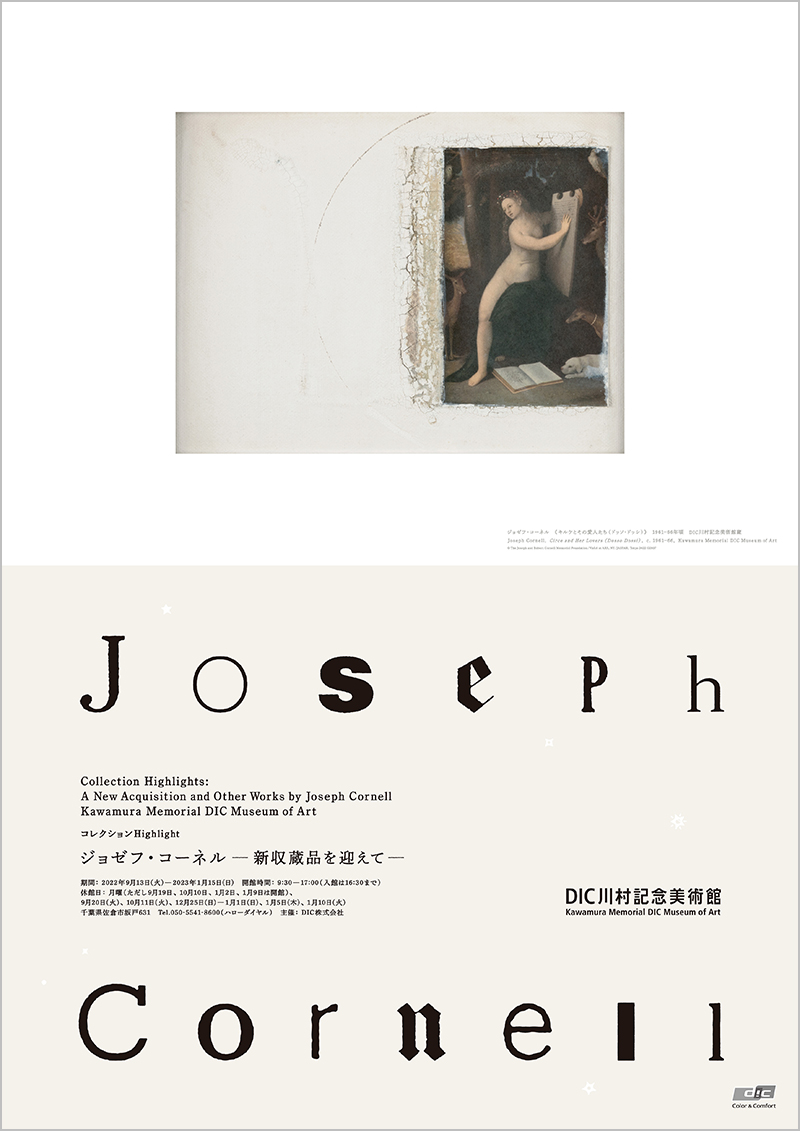A New Acquisition and Other Works by Joseph Cornell
Collection Highlights
September 13, 2022 - January 15, 2023
- Hours:
- 9:30-17:00 (last admission 16:30)
- Closed:
- Mondays (except Sep. 19, Oct. 10, Jan. 2 and 9), Sep.20, Oct. 11, Dec. 25 - Jan. 1, Jan. 5 and 10
- Organizer:
- DIC Corporation
Museum Admission
- Adults ¥1,500
- College / 65 and over ¥1,300
- Elem / JH / HS ¥600
Groups of 20 or more:
Persons with a disability pass:
- Adults ¥1,200
- College / 65 and over ¥1,000
- Elem / JH / HS ¥400
*Admission also includes entrance to the permanent collection galleries.
- For students and seniors over 65, discounts require identification such as a Student ID, passport or driver's license.
- For persons with a disability pass=the same discounted price applies for one accompanying care-giver for each disability pass holder
Outline
Kawamura Memorial DIC Museum of Art contains one of the largest museum collections of Joseph Cornell’s work in Japan. In the past, visitors have become familiar with Cornell’s art through a number of solo and group exhibitions. Recently, the museum has acquired another one of the artist’s collages. To commemorate the acquisition, we are pleased to present the museum’s entire Joseph Cornell Collection, which consists of seven boxes and ten collages. Normally, as only a few of Cornell’s works are displayed as part of the museum’s collection exhibitions, this is a valuable opportunity to see all of them at once.
The New Acquisition
Circe and Her Lovers (Dosso Dossi) (ca. 1961–66), is a late-period Cornell collage that uses part of a plate depicting Circe and Her Lovers in a Landscape (ca. 1525), a 16th-century work by the Northern Italian Renaissance painter Dosso Dossi.
The female figure holding a slate is Circe, an enchantress and goddess from Greek mythology who also appears in Homer’s epic poem The Odyssey. As Circe possessed the magical power to transform people into animals, the deer, dogs, and birds in the picture are presumably her former lovers. The same plate appears on the right side of several other Cornell collages, but this particular work does not contain any other collage elements. Other than the white space that occupies most of the picture plane, there is only a single arc – one of Cornell’s favorite motifs.
